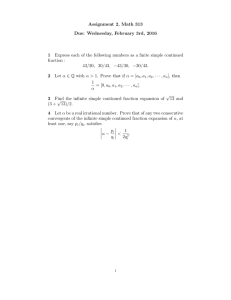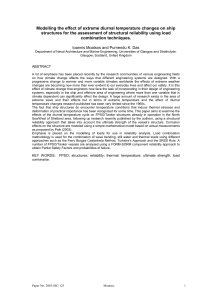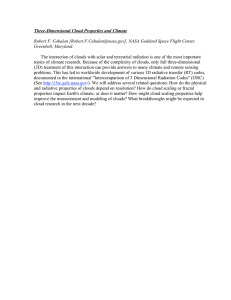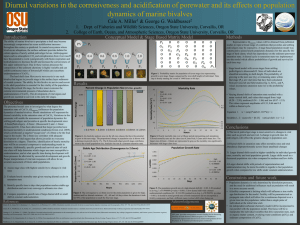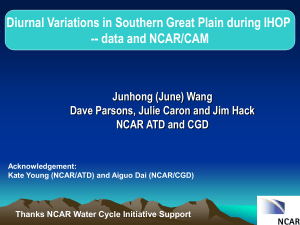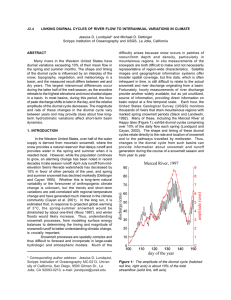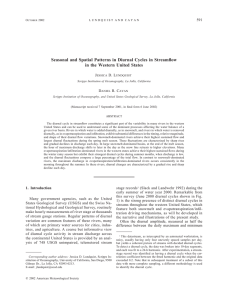Observational constraints on the first indirect aerosol effect Ralf Bennartz
advertisement
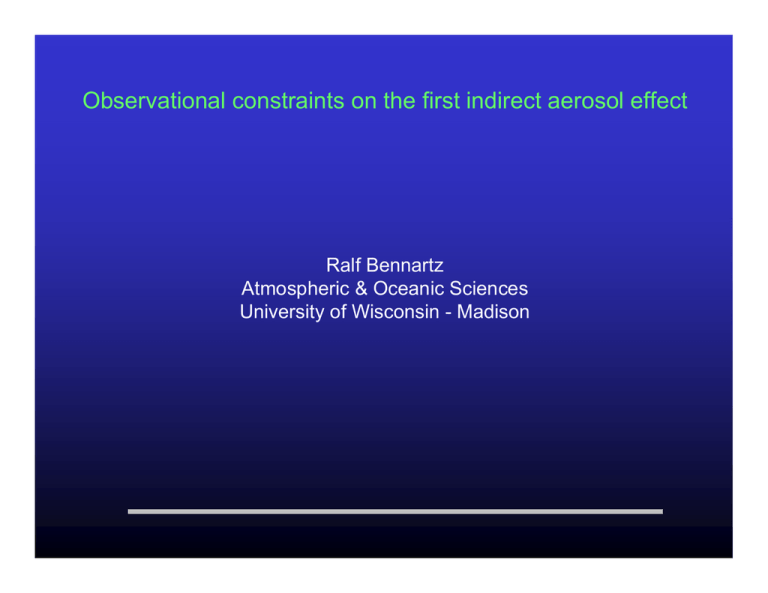
Observational constraints on the first indirect aerosol effect Ralf Bennartz Atmospheric & Oceanic Sciences University of Wisconsin - Madison Acknowledgements Rene Preusker Lothar Schüller Chris O’Dell Amato Evan FU-Berlin EUMETSAT UW-Madison UW-Madison Brent Maddux Lori Borg UW-Madison UW-Madison Albedo parameterization Indirect aerosol effect Diurnal cycle of LWP Diurnal cycle of CF Data Data IPCC 2007 IPCC 2001 Microphysical changes due to pollution Data • Cloud liquid water path diurnal cycle (O’Dell et al., 2007, J Climate, in press) • Cloud fraction diurnal cycle (ISCCP) • Cloud droplet number concentration (CDNC) (MODIS, Bennartz, 2007, JGR) • Aerosol & fine mode fraction (used as proxy for natural background fraction of CDNC) • Cloud droplet number concentration from MODIS The diurnal cycle of clouds Local Time [hours] The diurnal cycle of clouds Liquid Water Path [kg/m2] Local Time [hours] The diurnal cycle of clouds Liquid Water Path [kg/m2] Low Cloud fraction Local Time [hours] The diurnal cycle of clouds Liquid Water Path [kg/m2] Low Cloud fraction Local Time [hours] Reflected Solar Flux How does our albedo compare to observations (CERES)? Anthropogenic fraction: Note: This is a proxy IAE This study (Chen and Penner, 2005, ACP) Conclusions IPCC 2007 Conclusions IPCC 2007 Land N to first order a function of anthropogenic aerosol optical thickness Different behavior for different continents at high anthropogenic fraction Ocean ( ) N = 20 + 35 ⋅ ⎡ log10 ( cchlorophyll ) + 2 ≥ 0 ⎤ + 104 ⋅ ⎣ ⎦ τ anth , proxy τ
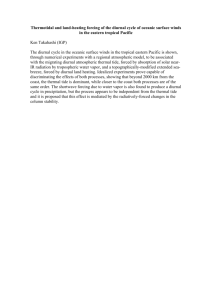
![The Aerosol Indirect Effect Jim Coakley [], Oregon State University, Corvallis.](http://s2.studylib.net/store/data/012738990_1-645b02ebdb93471998345dc04cdbae21-300x300.png)


